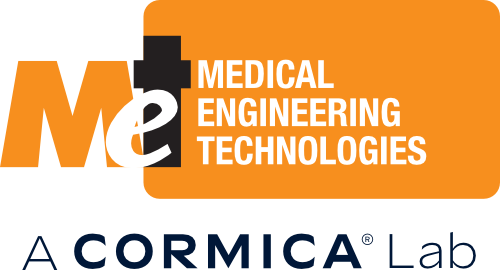Nanoparticles in Medical Devices: Balancing Risks and Rewards
Introduction
Nanotechnology has become a revolutionary approach in many advances in medical devices. It is often used in catheters, synthetic bone grafts, orthopedic implants, wound care, IVD (In Vitro Diagnostics), in vivo imaging, AIMD (Active Implantable Medical Devices), dental fillers and composites, dental crowns, and instruments.
Enhancing Effectiveness with Nanoparticles
Nanoparticles can increase the effectiveness of implantation, drug release, and targeting specific organs, tumor cells, or data transmission from an implant. The nanoscale size (1-100nm) effectively targets specific organs and tissues while rapidly or gradually releasing treatment agents depending on their presentation. Nanoparticles possess unique physical and chemical properties due to their high surface area and nanoscale size. Their reactivity, toughness, and other properties also depend on their unique size, shape, and structure.

Figure 1 – Nanoparticle use, interaction with organism and release*
* https://link.springer.com/article/10.1007/s40820-022-00922-5/figures/4
For instance, bacterial drug resistance presents a challenge in antibacterial therapy because of the abuse of antibiotics and the formation of biofilms. Autologous bacteria-eliminating methods using gold nanoparticles as treatment have shown new hope in overcoming bacterial resistance within
multiple pathogens. Also, gold nanoparticles can conjugate with aptamers, antibiotics, antimicrobial peptides, and bacterial-specific antigens, demonstrating their antibacterial activity in multiple ways: good drug delivery performance and immune response mediation.
These treatments can have physical, chemical, or electromagnetic mechanisms affecting different species of infection or causing a heating effect in specifically targeted cells only (e.g., bacterial cells or cancer cells).

Figure 2 – Antibacterial applications of the Gold nanoparticles **
** https://www.hindawi.com/journals/jnm/2021/2501345/fig1/
Understanding Nanoparticle Migration
Although the use of nanoparticles is extremely effective and beneficial during its application, the mechanism for eliminating nanoparticles and their further migratory pathways are still in the early stages of discovery and remain unknown. Further migratory properties of nanomaterials of different particle sizes can cause them to migrate from one organ to another and eliminate either fully or only partially from the body***:
- Nanoparticles measuring 1.4-200nm mainly accumulate in the liver.
- Particles smaller than 10nm eliminate from the body longer than 80nm nanoparticles.
- Particles measuring 10nm - 15nm distribute widely throughout the body.
- Particles smaller than 12nm may cross the blood-brain barrier.
- Particles larger than 200nm tend to aggregate in the spleen.
***https://www.ncbi.nlm.nih.gov/pmc/articles/PMC7177798/
Understanding the physical characteristics and migratory properties of nanoparticles used as part of a medical device or as a product of a degrading medical implant is vital. Further research will prevent the unexpected risks to the patient, as it will considers not only the impact at the targeted organ, but also potentially cause the secondary effects during its natural the eliminating process or its accumulation in other organs, such as the liver, spleen, or kidneys.
Biological Evaluation of Nanotechnology
For nanoparticles or devices containing nanomaterials, the development of a biological evaluation plan at an initial risk assessment stage (although always recommended as a primary stage for any type of device) is vital to accurately assess the biological risks associated with them, including biological, toxicological, chemical, and physical risks to the patient. Latest standard ISO 10993-1 Biological evaluation of medical devices – Part 1: Evaluation and testing within a risk management and ISO/TR 10993-22 Biological evaluation of medical devices — Part 22: Guidance on nanomaterials provides a general framework on how we should begin assessing nanotechnology.
https://met.uk.com/services/biocompatibility/the-biological-evaluation-plan-bep-has-become-an-essential-precursor-to-biocompatibility-testing
According to the new FDA guidance, nanoparticles must be considered for any additional toxicity issues that might be relevant to submicron particles, such as absorption, distribution, accumulation into organs, potential metabolism, and elimination. Greater concerns are associated with submicron particles that cannot be readily detoxified and/or eliminated from the body. We also offer testing in support of EFSA nanoparticle regulations
https://www.fda.gov/regulatory-information/search-fda-guidance-documents/use-international-standard-iso-10993-1-biological-evaluation-medical-devices-part-1-evaluation-and
Current ISO 10993-1 recommends a toxicological review of the chemical structure of the nanoparticle. However, it is also important to address the potential risk coming from the physical size of the nanoparticle that can cause DNA damage****. The nanoparticles come into close contact with the cellular system, increasing the chances of uptake due to their small size. This cellular uptake of nanoparticles enhances their interaction with DNA, leading to structural and functional modifications (DNA damage/repair, DNA methylation) within the DNA. Thus, in vitro (and even in vivo studies) might be required to ensure that nanoparticles as part of a medical device do not cause mutagenic, cytotoxic, genotoxic, or other adverse effects on the patient.
**** https://www.ncbi.nlm.nih.gov/pmc/articles/PMC8511513/
Characterising Nanoparticle Properties
Cormica offers a wide range of testing to characterise the intrinsic properties of nanoparticles at various stages of their interaction with the patient’s body. ISO 10993-22 highlights the following properties that can be characterised by our laboratories:
- Chemical Composition Analysis (FTIR, Raman, TGA, UV/Vis, NMR)
- Structural Analysis (XRD)
- Rheology Assessment
- Particle Size Analysis (Laser Diffraction, Nanoparticle Tracking)
- Elemental Analysis (ICP-OES and ICP-MS)
- Particle Shape Analysis (Image Analysis, PSD by Static Automated Imaging)
- Surface Area and Porosity Determination (BET-SSA)
- Dynamic Light Scattering (DLS)
- Chromatography (SEC / GPC, LC-MS/MS, GC-MS/MS)
- Cytotoxic and Genotoxic Effects Evaluation
Expert Nanoparticles Guidance
Our team of experts will be able to design range of studies within the same timescale by using lastest technologies and constantly updating expertise and knowledge of our team.
About the Author:

Elena Henderson - Medical Engineering Technologies Ltd - A Cormica Lab
BSc in Biology with over 7 years of experience in leading complex Biocompatibility projects, planning and assessing safety (ISO 10993 and ISO 18562 series), Gap Analaysis of the wide range of the medical devices (BEP/BER), and successful submissions to UK MHRA, EU MDR and DFA authorities.
Active Member of British Toxicological Society, British Standard Institution (BSI) Committee Member in Medical device standards and a Member of the Royal Biological Society (RBS).
